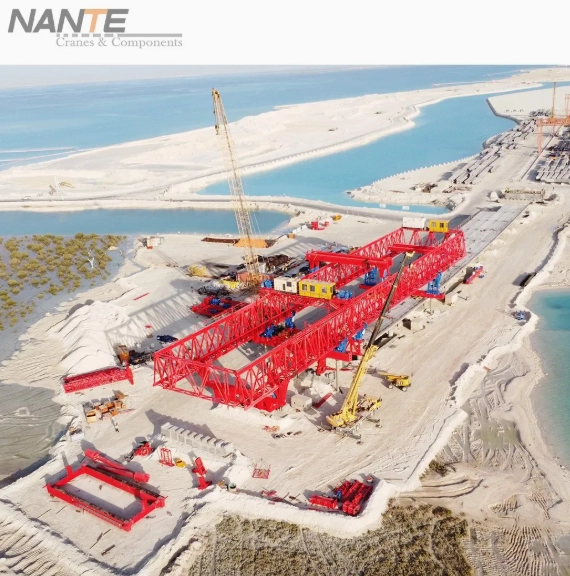How to Evaluate Crane Quality Before You Buy
How to Evaluate Crane Quality Before You Buy
Date: 2025-10-23 Share:
When you’re about to invest in a lifting solution, ensuring you get high-quality equipment is essential. In this crane buying guide we’ll walk you through every major inspection point—starting from the steel structure quality, motor brand and control system, through the testing process and warranty terms. Whether you’re selecting a new overhead crane, gantry crane or workstation crane, this crane quality inspection roadmap will help you choose a crane manufacturer you can trust. Use the checklist and comparison table provided to assess potential suppliers side-by-side.
Inspecting the Steel Structure Quality
The steel structure acts as the main support for every crane. Its quality decides the crane’s safety, how well it handles loads, and how long it lasts. A weak frame can hurt the whole setup. And it may cause big accidents when under heavy weight.
Material Grade and Fabrication Standards
The crane’s chief steel frame must use clearly listed structural steel grade. Examples include Q355B or ones equal to global rules like ASTM A572 or EN 10025 for lifting tools. These types give better strength compared to weight. They also resist wear from many lift cycles.
Why you should check weld strength, joint shape, and build accuracy: Welds can be weak spots. Search for full depth welds on vital joints. They must lack cracks, holes, or cuts. Joint shapes need to match AWS D1.1 or EN ISO 3834 rules. Accuracy should stay within ±1-2 mm for lining up. Bad build work can lead to wrong alignment. This cuts load ability by up to 20%.
Search for proof or papers that the steel structure follows known rules. Such as CE marking, ISO 3834 for welding, or outside approvals from Lloyd’s or DNV. Ask for mill papers that track steel back to the maker for real proof.
Surface Treatment, Corrosion Protection & Finishing
Good painting, layers, and rust guard are key. This is extra true in tough spots like beach areas, chemical sites, or wet storage rooms. A solid epoxy base with polyurethane top layer can add 10-15 years to life.
What to look at: Surface evenness (no bumpy skin or drips), layer depth (at least 120-200 microns with dry film gauge), and marks of rust or bad prep (like mill scale left). Blast cleaning to Sa 2.5 level before paint helps it stick. In rusty places, ask for hot-dip galvanizing or special layers like zinc-rich bases.
Structural Integrity Testing & Non-Destructive Testing (NDT)
NDT ways cover ultrasound (UT) for inside flaws, dye soak (PT) for top cracks, and magnetic bits (MT) for iron-based materials on key welds and parts. These find hidden issues. And they stop breaks before they happen.
Push the maker to show test papers or let you watch a live test. A good supplier will do 100% NDT on main beams and end carts. Reports get stamped by trained Level II checkers per ASNT or ISO 9712.
Steel Structure Checklist
| Pass Criteria | Details |
| Material Grade | Q355B or equivalent, with mill certs |
| Weld Quality | Full penetration, no defects per NDT |
| Coating Thickness | ≥150 microns, uniform |
| NDT Coverage | 100% on critical areas |
Evaluating the Motor Brand and Drive Components
Motors and drives serve as the core of crane work. Cutting corners here causes many stops and big fix bills.
Motor and Gearbox Quality
Why picking a known motor brand counts: Speed, trust, and help are sure with names like SEW, Siemens, or ABB. These give IP55+ guard, Class F wrap, and output over 90%. This cuts power waste.
Check if the gearbox fits right—helical or planetary kinds for even force transfer. Look at the name, type, and expected years (often 10-20 under normal work). Pick cranes with name-brand motors and gearboxes. This ensures smooth runs and little stop time for fixes.
Electrical Components and Drive System
View the drive control, frequency changer or VFD (if used) from solid sources like Danfoss or Yaskawa. These allow gentle starts and exact speed changes. Power guards include overload switches, phase loss watchers, and earth links.
Inspect cable paths (fixed, no tight turns), connection blocks (marked, twist-checked), control box setup, and clean state. A tidy power system shows a skilled crane maker’s care. It lowers error chances by 30-50%.
Spare-Parts Availability and Manufacturer Support
How simple is it to get new motors, gearboxes, and power parts? Name-brand items are kept worldwide. Wait times under 48 hours in many areas.
The maker should supply papers or list okay brands. Search for nearby help partners or approved sellers. This stops fake parts that hurt safety.
Drive Component Comparison
| Aspect | Budget Option | Premium Option (e.g., SEW/ABB) |
| Motor Efficiency | 80-85% | 92-95% |
| Warranty on Motor | 1 year | 2-3 years |
| Global Spare Parts | Limited | Extensive network |
Assessing the Crane Control System
Today’s cranes need easy, safe controls for quick work.
Crane Control Panel and Safety Inspection Checklist
Check the control room or hand controls: Comfort (nice holds, good sight), marks (many languages, tough), emergency halt (big button, easy reach), and overload guard (electric load sensors exact to ±1%).
Safety locks and guard tools include end switches (hoist, trolley, bridge), crash avoid sensors, and anti-swing setups. These stop load swings.
Automation, Monitoring and IoT-Capability
If it fits: Does the crane have smart watch, data save, or far-off checks via PLCs like Siemens S7? New smart cranes with IoT watch boost forecast care. They cut surprise stops by warning about issues like bearing wear early.
How this boosts long use and run time: Live data can lower care costs by 15-25% with need-based plans.
Ease of Maintenance and User Training
Does the maker give papers or lessons for workers and fix teams? Full guides, drawings, and site classes are normal.
Easy reach to control box (swing doors, enough room), wire order (color marked, grouped), and quick checks (fast-open panels) make service simple.
Understanding the Testing Process Before Delivery
Before you take your crane, demand a clear Factory Acceptance Test (FAT) and Site Acceptance Test (SAT) plan. These prove the gear meets design, speed, and safety needs.
Factory Acceptance Test (FAT) and Site Acceptance Test (SAT)
A FAT happens at the maker’s site. It mimics real work. You should view load trials, run checks, and control proofs. SAT does main tests again after setup.
The value of a watched test by you or outside group (like SGS or TÜV) keeps it fair. It spots mismatches soon.
Load Test, Operational Test, Safety Test Details
What weights to test: 100% of rated load plus 10-25% extra safety (for example, 125% static, 110% dynamic per ASME B30 or FEM rules).
View moving speed (speed up/slow down), brake hold (at 125% load), hoist move evenness, and end switch work. No too much bend or loud sounds.
Documentation, Certificates and Traceability
Request test papers, material proofs, NDT reports, and weld certs (WPQR/WPS). The value of tracking: Serial numbers on steel, motors, and parts allow pulls if flaws show. This meets ISO 9001.
Warranty, After-sales Support and Choosing a Crane Manufacturer
Warranty Terms and What They Cover
Search for a warranty of 18-36 months. It should include parts, work, and trips for flaws. Make clear what is not covered, like wrong use or bad care.
After-sales Service Network and Spare-parts Supply
Does the maker have world help, quick reply (24-48 hours), and part shipping? This affects stop time—fast fixes keep work going. It lowers total life cost by 20%.
Why Selecting the Right Crane Manufacturer Matters
Main points in how to choose a crane manufacturer: Past work (refs from like jobs), certs (ISO 9001, CE), custom build skill, new build site, and quality plan (like Six Sigma).
A short checklist to compare makers:
- Years in business: >20
- Annual production: >500 units
- In-house design team: Yes
- Third-party certifications: Multiple
Why Choose Nante Crane – Company & Products Overview
Nante Crane stands as a top Chinese creator and builder of cranes and parts. It has over 30 years of skill and strong research power. It focuses on industrial cranes, offshore cranes, crane components, and custom fixes. Nante Crane gives fit lifting tools for many fields like making, ports, and building.
Focus on quality care: Certified ISO9001 for quality, ISO45001 for safety. It follows global rules in design and build. Full FAT skill ensures every crane passes strict pre-send tests.
Contact Nante Crane today for a quick quote, check help, factory tour, or video show. Get your top-quality crane buy safe now.
FAQ
Q1: What are the most common defects to watch out for when evaluating crane quality?
Common flaws include bad welds (cracks, partial join), thin paint/layer (<80 microns), no-name motors, no load test papers, and short or vague warranty (like <12 months, no work cover).
Q2: Is brand of motor really that important? Yes — famous motor brands give better trust, help, proven speed, and longer life. Often with 50% less breaks than no-names.
Q3: How often should maintenance be done on a crane to maintain its quality? Care often depends on use, place, and lift counts. But monthly or quarterly checks plus yearly full reviews are suggested. Follow OSHA or ISO 9927 guides.
Q4: Can I rely solely on the manufacturer’s documentation without visiting the factory?
Papers are key. But a factory visit or test watch adds more sure. If not possible, ask for FAT video, outside watcher, or independent cert.





